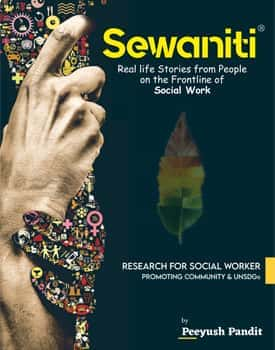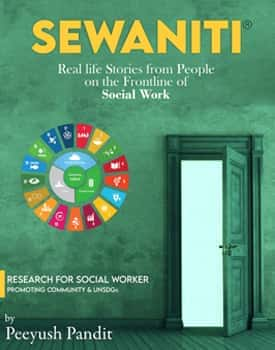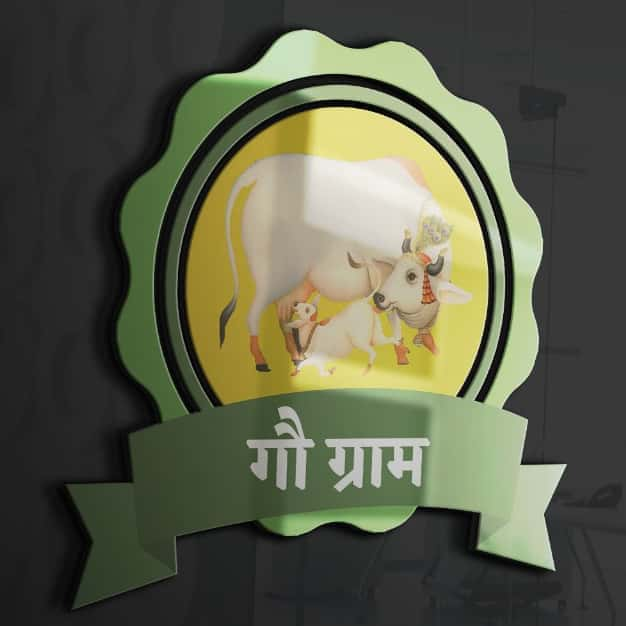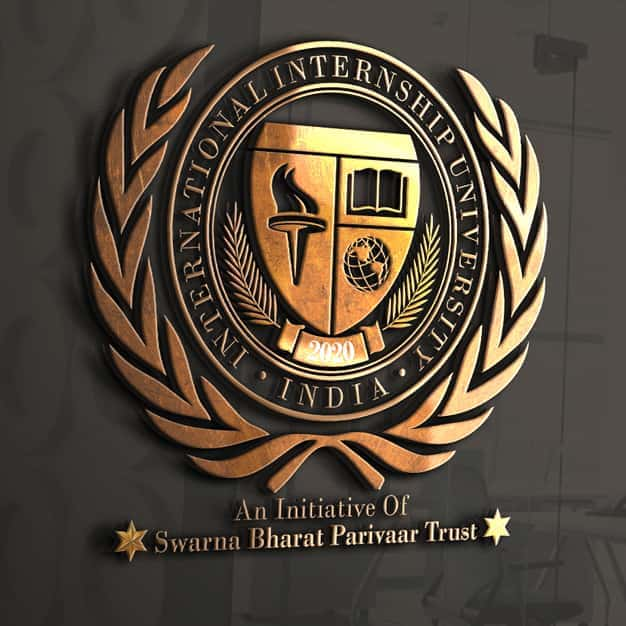facilites & Goals
Sustainable Development Goals and their Implementation strategies
No Poverty
UNDP’s first sustainable development goal is to eradicate poverty which remains more of a challenge than a goal. The statistics alongside this are not just horrifying but deeply disheartening. There is no access to necessities such as food or clean drinking water or sanitation. There is a major gender difference which can be seen in this context, due to the difference in wages and education.
E-village is trying to build a community where there is no impoverishment and there is enough economy for everyone including women to support families and have all the basic facilities. Here is a list of institutions and facilities in the e-village which would lead to a future of no poverty by creating a cycle which establishes permanent employment, a higher level of education and self-sustained families which are not dependent on anyone.
100% Employment What seems like a distant dream is the smartest way of a better India. 100% Employment, a vision that has many components and requires smart implementation. Since we are talking about a unified traditional community, there are many different ways in which the villagers can be employed.
» Skill-based employment: Building skills like entrepreneurship, craftsmanship, industry and vocational skills can prove to be a stepping stone towards success. The women of our villages can have a separate working sector where many of them work together in industries like; thread-making industry, bangle-making industry, pottery etc.
» Employment Help Centre: The e-village comprises of an employment help centre that guides the villagers. It also has an official website that is updated with job postings all over the nation. It assists the villagers in making career-related decisions and also makes sure that they secure a job more easily.
» The residents of metropolitan cities are often looking for an escape into a quieter and calmer place.
Village Tourism can appeal to the keen eyes looking for a getaway. But moreover, it can bring us foreign revenue by the nature of its existence itself. A village which is metropolitan and still contains its essence is truly one of its kind. This would be an attraction for
those who want to seek something unique and out of the world. This idea appeals to a great population and it will surely serve as the first example of how development in villages has to be propagated. The numerous rarities of a mixture of metro and village and East and West in some cases would encourage people to visit, help us generate revenue and also spread the message of a sustainably developed world across. Camping sites can be installed in the village with equipped tents and necessary things. These sites can also be promoted online that will bring about tourism in the village and also account for an increase in popularity.
» Restaurants that promote ancient and Sattvik cuisine: Indian villages also show a distance to the modern concept of fast food and chemicals. Our ancient Indian diet has proved to be extremely beneficial for our health. In response to the KFCs of the cities, the villages can have a restaurant that promotes sattvik food. Digital marketing can be used to promote the restaurant both in and outside the village. This will be a great way to promote Indian culture as well as increase business for the food industry in the village. People will develop the habit of appreciating the richness of our ancestral food.
» Organic Farming: To increase yield and fasten the process of abundant production, the farmers of rural India, adopt an unhealthy route due to the lack of awareness and knowledge by using chemical fertilisers, pesticides and hormone applications. If the concept of Organic Farming is commercialized by spreading its awareness so that people can be appointed just to make sure the procedure is done in the right way, employment will not be an issue. Organic Farming can be made into a wonderful business as many individuals are turning health-conscious, the product can be exported in return for a good revenue. Thus, the problem of unemployment can be tackled productively.
» Event management companies: Our folk forms, traditional music, puppetry and all other art forms are very deep-rooted. If these forms are given a boost and the talented artists of the villages are given a platform to showcase their skills, it will be an advantage, both for the promotion of the art form and also for the broadening of the employment sector. The shows can be ticketed and there can be scope for collaborating with national and international artists. The updates of upcoming events in the villages can be communicated online.
Health
The emerging health profile of India has emerged over the past few years amongst the social, demographic and political backgrounds. Taboos still reside in the tribal parts regarding the cause of health issues while undocumented, traditional medicine systems are still in a place where proper education has not been propagated regarding the prevention and cure of diseases.
Despite all of this, villages have a wealth of unique methods which are unique to them like Ayurveda, Unani, Siddha and naturopathy making their quotient in a certain kind of effective treatment higher and unique. The villages need a chance to develop these in the right environment and a provision of resources for their establishment. Health literature and health consciousness and better maternal and child health services are to be renewed.
The e-village will have the indigenous medical systems of India and will strive to break through the institutionalisation of “modern medicine”. The concepts which have diminished from the existing value systems will be reiterated to the masses in the village. This model of health will be “sociocultural” and will look beyond the norms which exist under the paradigm of medicine in India. There will be a society which will have more awareness of their well-being and how to take care of it in all aspects- be it physical, mental or spiritual. The revival of Indian forms of medicinal systems will lead to a revolution in a completely new understanding of the existing healthcare system. A more organic treatment combined with the technical mixture of types of equipment and ideas can change the orientation of health in the village by creating a binary approach to prevention and cure which will lead to better health.
1. Maintenance of Hospitals with skilled doctors: The lack of proper facilities is a major issue in most villages. The hospital will be therefore infrastructurally equipped with appropriate, world-class facilities with proper specialists for all the health problems which are recurring or which may occur. It will consist of multiple wings for Allopathy, Homeopathy and Indigenous systems. The aspirants from the e-village will be able to intern in their separate area of interest. The existing experts will be given jobs based on their previous success. This would also help the Vaidyas to get proper employment, with a proper salary. The cleanliness of the place will have the utmost primacy in this situation and the staff will be carefully recruited. Training centres for various courses will be established and an experimental wing can be set up for all kinds of doctors and experts to mingle and design comprehensive plans for the patient which have an integrated approach. Since the hospital will follow the principles of an e-village, the copy of the prescriptions, appointments and any medical records can be accessed online. Hospitals will also be enabled with a quick ambulance reach out to the centre where ambulances can be booked online in cases of emergencies, as the ambulance reach in villages is quite low.
2. Sports Centre and Yoga Centre: Sports and Yoga can formulate a culture of healthy practice among the villagers apart from proper treatment. Swimming, Basketball, Football, Kabaddi and other such sports are to be practised and encouraged in the community village sports centre. Not only these games, but the games which are dear to the village individuals like Gilli Danda and Satolia will also have their respective apparatus at the centre for the people to play. These games will be passed onto future generations and tourists to avoid their extinction. Professional training to be given so that the students can participate in State level and national level competitions.
Yoga constitutes a wide section of India’s culture and is now being practised all over the world. Thus, our villages must inculcate Yoga as a practice. From home to school, all people should be compulsorily engaged in Yoga and meditation.
3. Care Centre: Small health care centres should be established for regular check-ups and immediate interventions. These will be closer to their localities for people to get a heads up on their health when they are unsure about going to the hospital or what kind of treatment will suit them and to clear the doubts they carry regarding their health. Initially, the regular check-ups will be compulsory, especially for women and children, to check their progress and do away with problems which plague them. Blood donation camps and eye-donation camps will be held regularly and awareness programmes regarding the same will be conducted.
4. Proper Sanitation and Disposal: Open defecation that has been a root cause of spreading infection in rural areas will be completely prohibited and the construction of clean and hygienic toilets will be done. Every house will have its toilet and public toilets will be well-maintained. Installation of both Indian and Western-style will be done for the convenience of all people.
5. Water Treatment Program: Availability of clean water is essential to fight the atrocities of water-borne diseases that have been prominent in rural areas in India. A proper water treatment plant will be established, not only for drinking purposes but for also other chores. This water will be recycled for use for optimal utilisation of resources.
6. Awareness programmes: The lack of knowledge regarding first-aid, CPR and symptomatic manifestation of chronic diseases becomes an essential part of a community where every individual is work-oriented and independent. These awareness programmes will enable residents of the e-village to remain informed and be of use when someone is in need. This will also lead to self-diagnosis and immediate attention to serious problems which were not illuminated earlier.
Security Services
Security does not imply just physical or mental but the security of culture and tradition which is a big aim of this e-village. Though it will be digitised and modernised, it will be Indian in all ways possible. This will come through the following steps-
1. Protection of Resources: Before incorporating various other elements, protection of the already existing resources in the village will be taken care of. There will be a constant recycle and renewal of resources to ensure sustainability. The resources will be respected and used at the cost of their existence and importance. Reserves will be developed for these and funds will be created out of the residual energy for better utilisation.
2. Communicating Open Systems: Open multi-agent systems will be designed to create links between the electronic institutions, understanding the structure of data, representation of the state and the operations are important to establish such an institution. This would provide a computational analogue for coordinating multiple software agents. Security threats will be better prevented this way under a developed open source for the software. This can help formulate common threats, patterns and security solutions to many of the security issue faced digitally.
Education
The goal of education is not to create a difference in the literacy rates of the country but to provide quality education to people of all ages, in all domains and streams required. The education in e-village will be completely free of cost. All the study material will be provided by the institution. Well-trained teachers will be appointed and tie-ups with various institutions will bring about new possibilities like distance learning, correspondence, night schools for adults and even online courses.
Education will be conceptual and application-based. The system will prohibit any sort of rote learning methods and will assess the learner on his/her aptitude and skill. Computer literacy will be encouraged and digitisation of notes and interaction of students and teachers at an online platform will help propagate the culture of group discussions. Not just the children but people of all ages will be educated based on their requirement of skill.
1. Modern Gurukul education: If the principles of the ancient Gurukuls that revolve around brotherhood, love, humanity and discipline are coupled with digitised education, the result is the formation of a “Modern Gurukul”. It can be observed that the Indian
villages show much more unity than any other town or city does. The Gurukuls would be equipped with computer labs and have the provision of the high-speed net. The students would indulge in cultural exchange programs and interact with students from different schools all around the world. This would enhance their development in many ways and also add to their awareness of how different schools function. The primary subjects to be studied would be the Epics and Vedas that will help preserve our Indian traditions. Along with these subjects, languages, science and mathematics would be taught to the shishyas. The students can also share their knowledge of Indian scriptures with students across the world.
2. Online classes for adults: The main occupation types in Indian villages comprise of agriculture, fishing, weaving, cottage industry, handicrafts etc. Thus, it is very difficult to incorporate an opportunity for adults to start or finish their incomplete education in their daily routines. However, if online lessons are made available for adults, they can view them under their convenience. The courses will comprise of both mainstream academics as well as skill enhancement lessons. For example, if the students practice farming, they can enhance their knowledge through an online course on agriculture and the addition of subsidies if possible would also be beneficial.
3. Eliminate Gender Inequality through Education: The right to education will be equal to both girls and boys. It will be free for both and equal opportunities will be provided to both. This will lead to a progressive change in the societal norms and patriarchal values at the root as the system of education will break the norms and conditions.
4. Free of Cost Primary/Secondary Education: Education being the base of all the other systems that have to be established, will be free of cost for all the people in the village. The best facilities will be provided in every sense, be it the infrastructure or the content of the course. This would not just be true for school education but for training programmes which are a part of the educational scheme of the village. This will include education on agriculture, marketing, digital platforms or understanding the various jobs that will be provided. The adults who are uneducated or could not complete it will be sent to night schools so that they are not just literate but they know the basics of all disciplines and reading and writing in not just their native language but more as per their requirement.
5. Performing Arts and Fine Arts Academy: “It is in Oral traditions of the villages that the arts of India are really alive. The brief Western immorality of museums is pointless to people who have seen eternity in their earth.”- Santha Rama Rau. The heart of Indian art, particularly dance and music originates from Indian villages. Folk forms like Ghoomar, Chau and Yakshagana are mainly practised in Indian villages. If these native forms are encouraged, there can be a clever usage of skill enhancement in the eradication of unemployment. The lessons on the art forms can be made available online such that the students can take them at home. The Academy can host classes for these folk forms and
there can also be other classes that teach Contemporary Indian art forms that are not particular to the village. Under fine arts, handicrafts, painting, pottery, sculpting and other native art forms will be practised and taught. The progress of the students and their artwork can be shared online to promote the academy nationwide.
6. Village Central Academy: It can be magically experienced, that in books lies knowledge and in knowledge resides reality. Books can transform individuals in ways even they cannot comprehend. Thus, for the sustainable development of a village, books serve to be a very useful tool. The e-village thus will consist of a central library that will be equipped with an adequate amount of computers and a wide range of books including fiction, non-fiction and many other self-help books. The books will also be available in the form of e-books. The library will also grant readers access to online courses. Children’s books would be given utmost significance, as it is easier for the young budding readers to acquire the knowledge of language and literature.
Technical Maintenance
In a digitised village, this will play an integral role. All the equipment from the ones used in the agricultural fields to ones used in science labs in schools will be under the strict radar and will be maintained against all the odds. They will have functional checks, regular repairing and servicing. There will be replacement of equipment if need be, the building of infrastructure which is friendly to the machinery used and also people will be trained to use it in optimal amounts. Instalments of utilities for all sectors of work will be done in the e-village.
1. Condition-based Maintenance: This is not recommended for all the machinery but some. This is based on the condition of the machinery, so the corrective measures are only taken when there is a requirement.
2. Corrective Maintenance: This is the most expensive kind of maintenance as this is only done when the equipment is completely broken. This will be avoided so that damage control is easy and cost-effective.
3. Planned Maintenance: The maintenance of the equipment will be scheduled once a month or according to the requirement. The servicing of the machinery and products will be timely and the problems caused by normal wear and tear will ensure that the utility is properly used for its lifetime. Part replacements will be, therefore, scheduled. This will be date-based and will be done in fixed intervals. All the transport specifically will follow this for less pollution and revival from wear and tear regularly.
4. Predictive Maintenance: Predictive maintenance will be a precursor to all the other. They will be used to predict when the maintenance has to be performed. This will help in
cost-effective maintenance. The predictive replacement will be done for certain items, if necessary.
5. Preventive Maintenance: The anticipation of small problems and fixing them right away will help people avoid the big ones when they develop. This will also in some cases increase the perceived timeline of the product and reduce the critical breakdown of the same. This will also ensure that there is minimal production loss because of this. Breakdown maintenance will be completely avoided.
6. Total productive Maintenance: This kind of maintenance which improves the overall integrity of the production and also the safety and quality of the equipment and this also adds value to the organisation. This is based on eight pillars of autonomous maintenance, focused improvement, planned maintenance, quality management, education and training, equipment management, administrative maintenance and safety and health. This is a holistic approach and important for village dynamics in every sector for overall development. This will enable an integrative approach to the development stages of the e-village and the individuals.
Energy
Alternative energy sources can lead to a renewable environment and free sources of energy. They lead to low carbon emissions and are a result of a natural phenomenon which can be easily formulated into energy. Installation of the plant may be expensive, but in the long run, it is a solution to sustainability and are free of cost after their installation. This will enable the e-village to contribute to save energy and have permanent access to electricity and water. It will be self-sufficient on its own. This will also be a big step towards saving the environment and avoid the “metropolitan pollution” which is bound to make its way into the village if these measures are not taken. The following plants will be installed:-
1. 24X7 Biogas Supply: Biogas plants are not just sources of energy but the best way to manage waste. Segregation of waste in the e-village will enable the villagers to engage in this and produce 24x7 energy for the entire village. This can be efficiently used as fuel and for cooking daily. This will enable 100% free electricity in the e-village and also will be distributed at optimum prices for other purposes in the industries. It is also the cheapest form of gas which can cut costs of LPG drastically.
2. Solar power plant: Solar power plant will also be used for electricity and heating purposes. Since it depends on the sun, they will be used during summers and when daylight is good. Solar lights will be established on the streets which will get charged by the day and will be activated by night. Also, in industries, it will be used to convert water as the heat-transfer fluid.
3. Wind energy harnessing plant: Wind turbines will be established to convert kinetic energy into mechanical power which can provide electricity to particular areas of the village, like school, playgrounds, etc. It will also be used for minor tasks of milling and pumping which will affect the general population.
Communication and Transport
1. Digitised Communication: The data connectivity in the e-village will ensure that no individual is missing out on important pieces of information, no individual is put to risk because of lack of contact and no citizen is unaware of the proceedings of the government and its policies. Along with digitally communicating with each other, they will adopt a digital lifestyle. Most of the villages are denied such facilities because of the large Capital Expenditure involved, however, if wireless technology instead of fibre is brought in their will be the instalment of easily erectable and transportable towers.
2. Railway Station and Bus Connectivity: According to the 2011 census, it has been deduced that in the rural areas, the most favoured form of transport is the bicycle (11.2 million). This is an outcome of both the population and the size of the respective villages. However, it must be acknowledged that this deprives each villager of many opportunities. Transport should not be a reason for any citizen to be held back from progressive development. The bus at 9.6 million is the next preferred option. However, the figure for transport by train is disappointing as it is reduced to 2.2 million which shows that the villages of India have very poor connectivity through railways. Moreover, it is the men of the villages of India who travel while more than 55% of women (11 million) continue to work at home and use no mode of transport to shuttle to their workplaces. Most of the girls are deprived of education and higher studies due to the lack of transport facilities. Thus, the Indian e-village wishes to tackle this problem by ensuring a connection between the cities and the villages.















